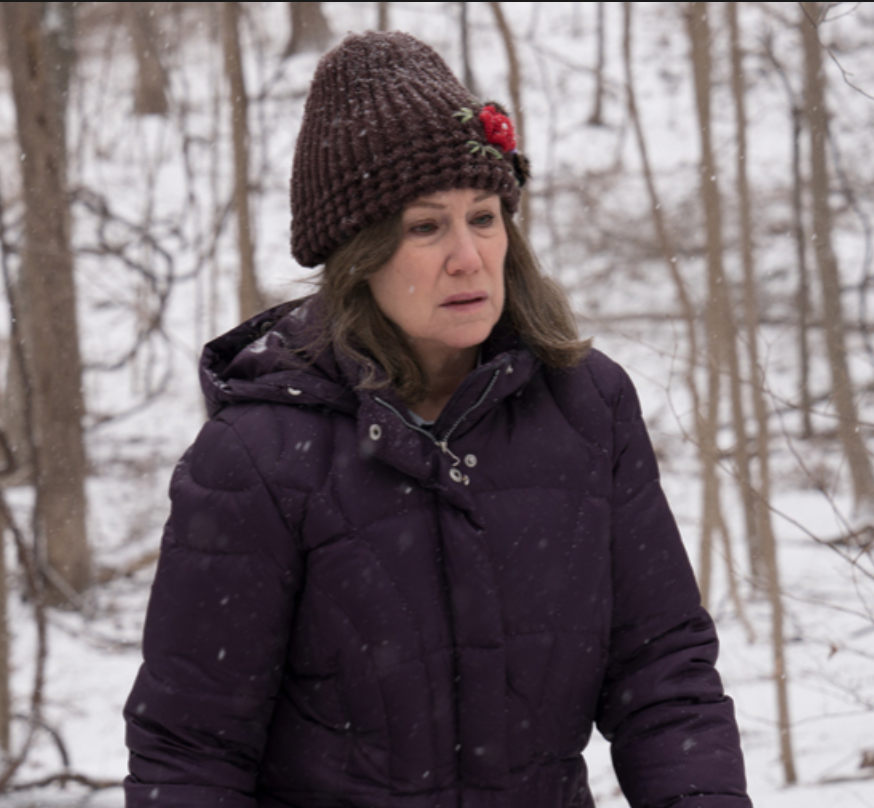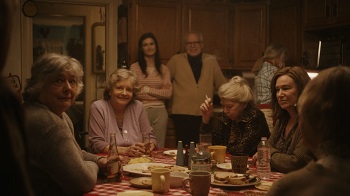 What follows is a film talk I gave a few months ago on Diane, about a 60something New England widow struggling to reconcile with her past and the ravages of time. I always loved talking to the now-defunct Westchester Film Club, but it was especially meaningful to discuss this small, mostly overlooked indie with them. N.B. To read this, it’s not necessary to have seen the film, but I encourage you to do so. It’s one of the best of the year.
What follows is a film talk I gave a few months ago on Diane, about a 60something New England widow struggling to reconcile with her past and the ravages of time. I always loved talking to the now-defunct Westchester Film Club, but it was especially meaningful to discuss this small, mostly overlooked indie with them. N.B. To read this, it’s not necessary to have seen the film, but I encourage you to do so. It’s one of the best of the year.
I consider Diane a quiet revolution of a film.
Its median age is above 60, everyone is lower middle class, and it is is mostly populated by women–the kind of bossy, pointedly unpretentious women who are the backbone of every New England town I knew growing up. For that matter, this film stars Mary Kay Place, whose plainspoken, peevish manner I’ve loved ever since Mary Hartman Mary Hartman, and who has deserved a hefty starring role ever since. That Diane also costars the great Andrea Martin in a rare serious turn, Joyce Van Patten, and Estelle Parsons speaks to how unobtrusively grownup-feminist this film is. Even the crew is mostly female.
This is also that rare American film that matter-of-factly accepts death as part of life, and examines time as deftly as any project since Richard Linklater’s Boyhood, which had to be filmed over the course of 12 years to achieve an equivalent level of invention.
Diane was filmed in only 20 days.
It is directed by Kent Jones and though it is his first fiction film, he is hardly a cinema newbie. The director of the New York Film Festival, he is an author and the director of such documentaries as Hitchcock/Truffaut, and the film’s executive producer Martin Scorsese is also a long-time friend and mentor. Dry and thoughtful, Kent grew up in Pittsfield, MA, in a family similar to Diane’s, and when he decided to make his debut feature about this world, he knew bluff Place had to play Diane. Thank goodness for that New England common sense.
It was filmed not far from this region, actually– in Kingston, Saugerties and Palenville–and the operative term for the visuals by production designer Debbie DeVilla, DP Wyatt Garfield and costume designer Carisa Kelly is “uncannily homespun.”
This world looks depressing at times–incredibly lovely at others–but always incredibly specific. To achieve its soft, grainy light, vintage nylons were placed in the back element of lens. In a few driving scenes, their slight diamond pattern is visible, one of many nods to the surrealism of regular life, I think. And we all know these characters’ knit hats, bulky jackets and sensible haircuts though, again, they’re rarely seen on screen.. Growing up in Northern Mass, I knew like the back of my hand the film’s unadorned, old-fashioned kitchens where women crowd around the table and guys stand a bit off to the sides.
 That big group kitchen scene is actually the first time Diane relaxes. You see her shoulders drop even before she enters this room of her elders. It’s a marked contrast to the weary, irritated but also apologetic stance she has nearly everywhere else, especially with her drug addict son, who aggravates and worries her but about whom she’s obviously guilty. The scenes with him are excruciating but also in keeping with the Sisyphean rhythm of her days, in which she stays busy taking care of people–working at the church soup kitchen, visiting cousin Donna in the hospital, helping out other friends and family in need. Grim, slightly bemused self-sacrifice is the backbone of Diane’s routine, and if you get the sense that she’s doing penance it also is true to her shrugging brand of New England Episcopalianism.
That big group kitchen scene is actually the first time Diane relaxes. You see her shoulders drop even before she enters this room of her elders. It’s a marked contrast to the weary, irritated but also apologetic stance she has nearly everywhere else, especially with her drug addict son, who aggravates and worries her but about whom she’s obviously guilty. The scenes with him are excruciating but also in keeping with the Sisyphean rhythm of her days, in which she stays busy taking care of people–working at the church soup kitchen, visiting cousin Donna in the hospital, helping out other friends and family in need. Grim, slightly bemused self-sacrifice is the backbone of Diane’s routine, and if you get the sense that she’s doing penance it also is true to her shrugging brand of New England Episcopalianism.
But just as I had settled into thinking I knew what this film was about–and maybe condescending to its small stakes and scale–everything deepened and quickened. Jones has said that the movement of time is where miracle happens in cinema, and that’s certainly true in his speeding rhythms, the seamless editing that skips over tragic events to fasten on their lonely aftermath.
First, cousin Donna dies, and then the other people of Diane’s world disappear until we are nearly alone with the thoughts she records in her notebook–what she calls “her shadow.” The sins she believes she carries from her misspent summer as a young mother literally haunt her, and as she ages and her solitude becomes more pronounced, guilt becomes her only true companion. At this point the film’s texture changes drastically: its narrative structure becomes as nonlinear as the memories holding her hostage. For after all, Diane is still a member of the 60s generation–as many of you are–and that wildness is all but erased from her demeanor until we see her loaded at the bar, swaying drunkenly to rock and roll on the jukebox. Does she really shoot heroin? Did she in the past? By the time that scene occurs I’m not sure if she even knows. Her guilt has literally warped reality.
Or take that final, cathartic conversation between Diane and her son, played, by the way, by the very gifted Jack Lacy. Such a scene would be the climax of another film but here it almost flows over us–she herself has such a muted response to his apology. Because this movie isn’t about her relationship with her son specifically so much as it is about how our subjective memories of pain and pleasure become more real than our present. That scene of her death–the last gasp of her whirling dervish of worries–is downright searing.
As is the depiction of the terrible loneliness of outliving your people–your family, your peers, your witnesses. It’s all the more profound for how relatively undocumented it is on screen.
Diane offers a useful critique of born-again Christianity, equating its absolutism and self-reference to addiction, but I believe it be a deeply spiritual film.
 For everything here is a meditation– on the ecstasy found in the most quotidian moments. On the long lonely spaces between things. On the lacy, bare trees of winter woods. On service and even in sins. Kent Jones has said, “Attunement to the world around you can attune you to cinema, and cinema in turn can attune you to the world around you.” That’s how this film reads for me. It makes me aware of how time is rushing even when it seems to stand still. And of how every moment is precious exactly for how ordinary it is. Including the one I am sharing right now with you.
For everything here is a meditation– on the ecstasy found in the most quotidian moments. On the long lonely spaces between things. On the lacy, bare trees of winter woods. On service and even in sins. Kent Jones has said, “Attunement to the world around you can attune you to cinema, and cinema in turn can attune you to the world around you.” That’s how this film reads for me. It makes me aware of how time is rushing even when it seems to stand still. And of how every moment is precious exactly for how ordinary it is. Including the one I am sharing right now with you.
